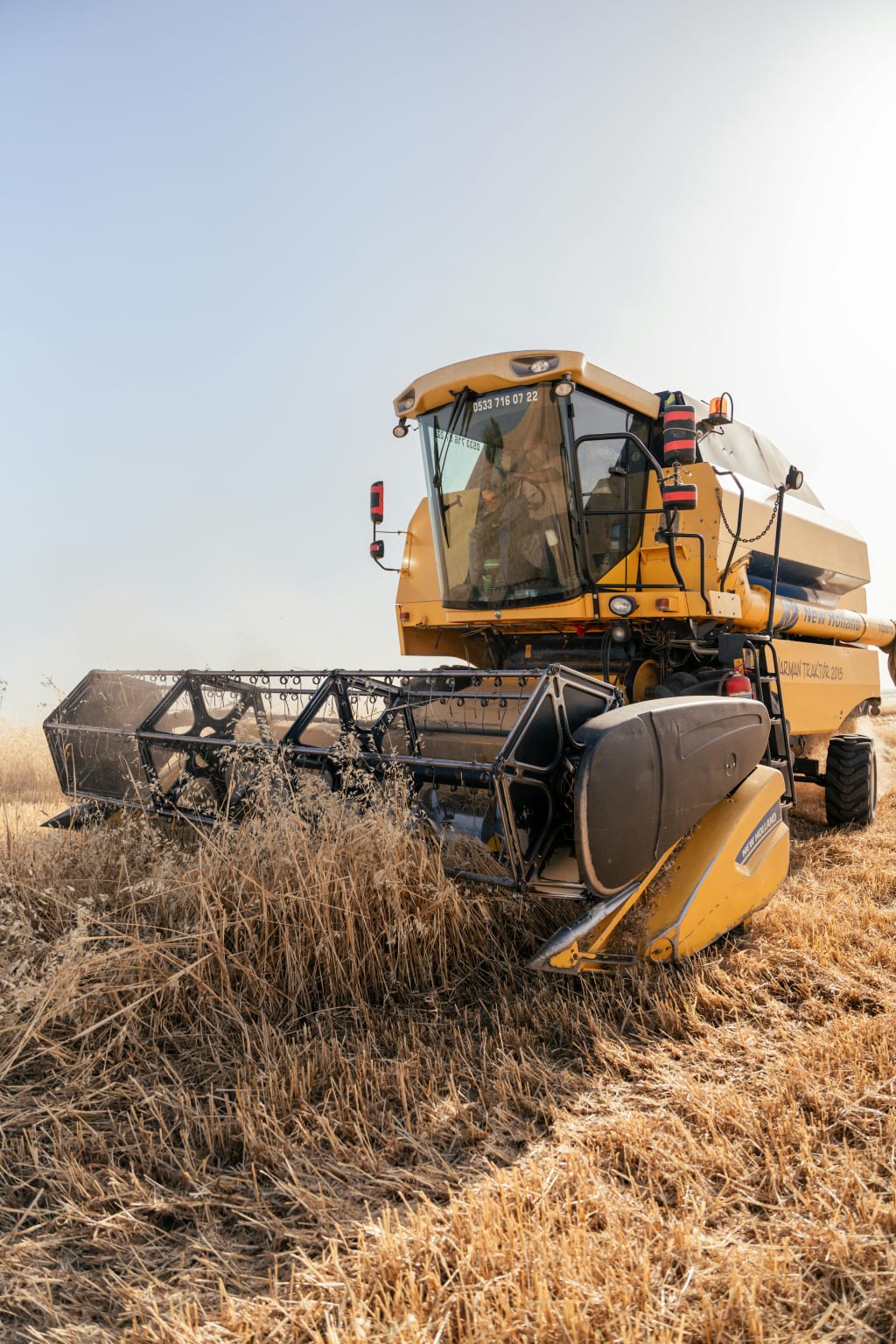IoT in Agriculture: Innovations Shaping the Future of Farming.
Explore the impact of IoT technology on modern agriculture and how it is revolutionizing the industry.

The Role of IoT in Agriculture
The role of IoT in agriculture is to provide farmers with advanced technology solutions to monitor and optimize their farming operations. By connecting various devices and sensors, IoT enables real-time data collection, analysis, and control of agricultural processes. This technology allows farmers to make data-driven decisions, increase efficiency, and improve productivity.
One of the key aspects of IoT in agriculture is the ability to monitor environmental conditions. Sensors can be deployed in fields to measure temperature, humidity, soil moisture, and other relevant parameters. This data can then be analyzed to determine the optimal conditions for crop growth and adjust irrigation and fertilization accordingly. IoT also enables the monitoring of livestock, helping farmers track their health, behavior, and location.
Another important role of IoT in agriculture is the automation of tasks. Connected devices such as drones and robots can be used for precision farming operations, such as planting seeds, applying pesticides, and harvesting crops. These devices can navigate fields autonomously and perform tasks with high accuracy and efficiency. IoT also enables the integration of smart irrigation systems, which can adjust water usage based on real-time weather conditions and soil moisture levels.
Overall, IoT plays a crucial role in transforming traditional farming practices into smart and sustainable agriculture. By leveraging advanced technology and data analytics, farmers can optimize their operations, reduce resource waste, and increase yields.
Benefits of Implementing IoT in Farming
Implementing IoT in farming offers numerous benefits for farmers and the agricultural industry as a whole. One of the key advantages is improved efficiency. By connecting various devices and sensors, farmers can gather real-time data about their crops, livestock, and environmental conditions. This data can then be analyzed to identify areas for improvement and make data-driven decisions. By optimizing irrigation, fertilization, and other farming processes, farmers can reduce waste and increase productivity.
Another benefit of implementing IoT in farming is increased sustainability. By monitoring and controlling resource usage, farmers can reduce water and energy waste. IoT enables the implementation of precision farming techniques, where inputs such as water, fertilizers, and pesticides are applied only where and when they are needed, minimizing environmental impact. Additionally, IoT can help farmers detect and respond to pests, diseases, and other threats more effectively, reducing the need for chemical interventions.
IoT also brings significant cost savings to farmers. By automating tasks and optimizing resource usage, farmers can reduce labor costs and input expenses. For example, smart irrigation systems can save water by only watering crops when necessary, reducing water bills. IoT technology also enables predictive maintenance of farming equipment, helping farmers identify and address issues before they become costly failures.
In addition to these benefits, implementing IoT in farming can enhance food safety and traceability. By monitoring the entire supply chain, from farm to consumer, IoT can ensure that food products are handled and stored under optimal conditions. This technology can also track the origin of products, enabling faster and more accurate recalls in case of contamination or other safety issues.
Overall, the benefits of implementing IoT in farming are vast, ranging from improved efficiency and sustainability to cost savings and enhanced food safety. This technology has the potential to revolutionize the agricultural industry and help meet the growing demand for food in a more sustainable and responsible manner.
Cutting-Edge IoT Innovations in Agriculture
The field of agriculture has seen numerous cutting-edge IoT innovations that are transforming the way farming is done. One of the key innovations is the use of drones for precision agriculture. Drones equipped with cameras and sensors can capture high-resolution images of crops, helping farmers monitor their health and detect early signs of diseases or nutrient deficiencies. Drones can also be used for aerial spraying of fertilizers and pesticides, reducing the need for manual labor and minimizing chemical exposure.
Another cutting-edge IoT innovation in agriculture is the use of autonomous robots. These robots can be programmed to perform a variety of tasks, such as planting seeds, weeding, and harvesting crops. By automating these labor-intensive tasks, farmers can reduce costs and increase efficiency. Autonomous robots can navigate fields using GPS and sensors, ensuring precise operations and minimizing damage to crops.
IoT technology has also enabled the development of smart irrigation systems. These systems use sensors to monitor soil moisture levels, weather conditions, and crop water requirements. Based on this data, the systems can automatically adjust irrigation schedules and water usage, ensuring optimal conditions for crop growth while minimizing water waste. Some smart irrigation systems can even be controlled remotely through mobile applications.
In addition to drones, robots, and smart irrigation systems, IoT has also enabled the development of livestock monitoring solutions. Connected sensors can be attached to animals to track their health, behavior, and location. This data can help farmers identify signs of illness, optimize feed and nutrition, and prevent livestock theft. IoT technology also enables the monitoring of environmental conditions in livestock facilities, such as temperature, humidity, and air quality.
These cutting-edge IoT innovations are revolutionizing agriculture by improving efficiency, reducing labor requirements, and optimizing resource usage. They are enabling farmers to produce more food with fewer resources and less environmental impact, contributing to a more sustainable and resilient agricultural industry.
Challenges and Solutions in Adopting IoT
While IoT technology offers numerous benefits for agriculture, its adoption also comes with challenges. One of the main challenges is the complexity of implementing IoT systems. Farmers may lack the technical expertise and resources to deploy and maintain the necessary devices, sensors, and networks. Additionally, integrating IoT solutions with existing farming practices and equipment can be challenging.
In conclusion, the future of farming with IoT is bright and full of possibilities. By leveraging advanced technologies such as AI, ML, and robotics, farmers will be able to achieve higher levels of efficiency, productivity, and sustainability. IoT will continue to revolutionize the agricultural industry and shape the future of farming.
About the Creator
Enjoyed the story? Support the Creator.
Subscribe for free to receive all their stories in your feed. You could also pledge your support or give them a one-off tip, letting them know you appreciate their work.






Comments (1)
Thank you for the interesting and delicious content. Follow my story now.